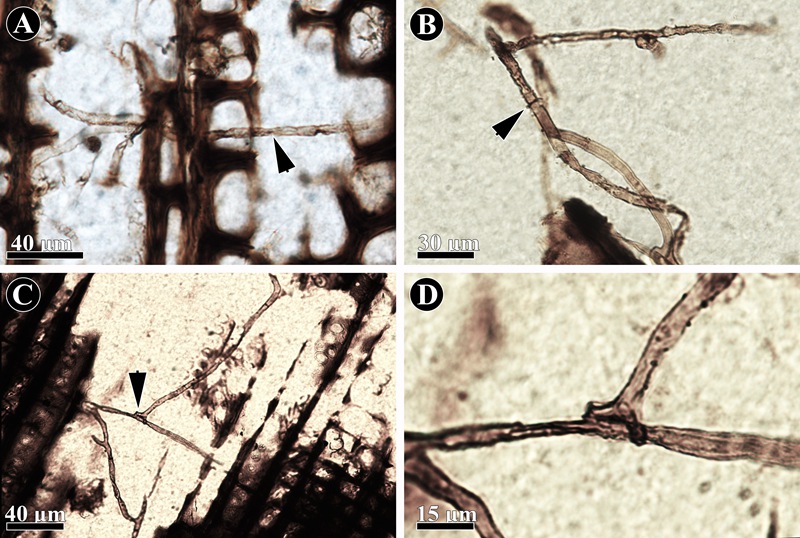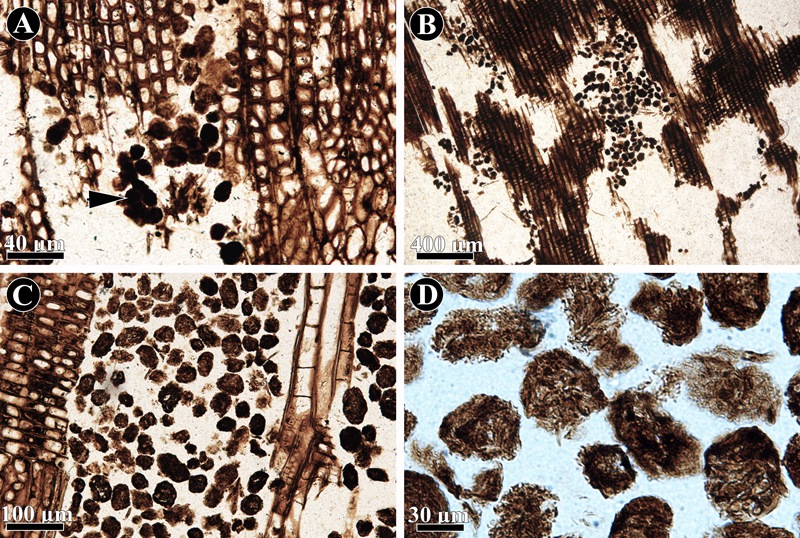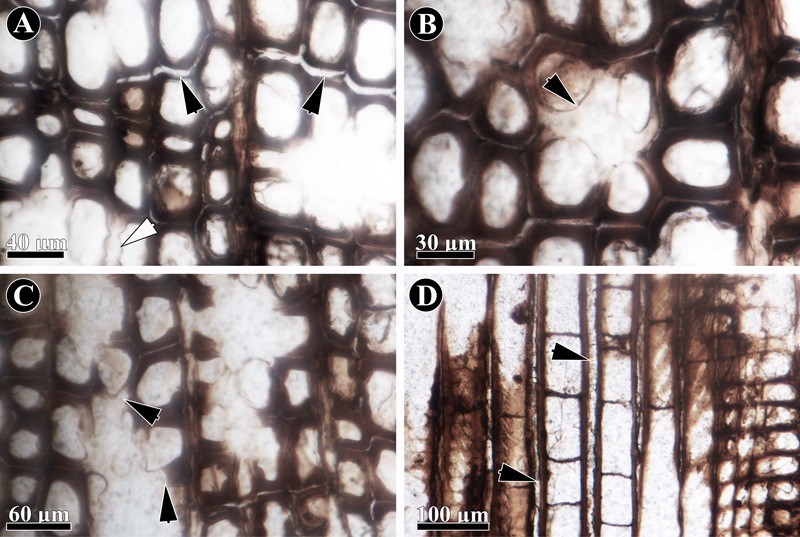
Fungal hyphae in the fossil wood from the upper Permian of Xinjiang
Fungi and oribatid mites are major decomposers of higher plants in modern ecosystem. The interactions among oribatid mites, fungi and plants in terrestrial ecosystems have been well documented during the late Paleozoic. However, previous records have been observed mainly from materials of Euramerican and Gondwanan floras, providing little information on the mid-latitude Angara Flora.

Decaying processes in the fossil wood
Recently, Dr. WAN Mingli and Prof. WANG Jun from Nanjing Institute of Geology and Palaeontology, Chinese Academy of Sciences documented several lines of evidence of plant-arthropod and plant-fungus interactions from the Wuchiapingian in Turpan-Hami Basin, Xinjiang, northwestern China. Fossil wood, Septomedullopitys szei Wan, Yang et Wang, contains differentially-damaged areas. Spindle-shaped pockets in the fossil wood occur in the secondary xylem are commonly free of organic remains. They are comparable in appearance to modern white-pocket rot caused by fungi. The tracheid walls around the decomposed areas are degraded from the middle lamellae to outer layers. Abundant branching and septate fungal hyphae in the decayed areas, ray parenchyma and tracheid lumens indicate that fungi are responsible for the wood decay. These fungi are partially regarded as basidiomycetes because of the occurrence of clamp connections. According to the characteristic damages they caused to the host, ascomycetes are also viable candidates of the fungi because large parts of hyphae are without certain clamp connections. The other damaged excavations are the branched and maze-like borings and galleries, which are filled with abundant fungal hyphae, cellular debris and spheroidal to ovoidal, dark-colored coprolites. The size, shape, surface texture of these coprolites indicates that the coprolites are the feces of ancient oribatid mites. The fungal hyphae, coprolites, and degraded excavations in the pith of the late Permian wood suggest that wood-rotting and -boring were not limited to the xylem. Results of this study provide important information about the co-occurrence of plant-arthropod and plant-fungus interactions in the late Permian, and demonstrate the complexity of the terrestrial ecosystems at the east coast of mid-latitude northeastern Pangea.

Coprolites and borings in the fossil wood
This work is supported by Chinese Academy of Sciences, State Key Laboratory of Palaeobiology and Stratigraphy, and the National Natural Science Foundation of China.
Related information of this paper: Mingli Wan, Wan Yang, Lujun Liu, Jun Wang*, 2016. Plant-arthropod and plant-fungus interactions in late Permian gymnospermous woods from the Bogda Mountains, Xinjiang, northwestern China.Review of Palaeobotany and Palynology, 235: 120-128. doi: 10.1016/j.revpalbo.2016.10.003.
Download:
